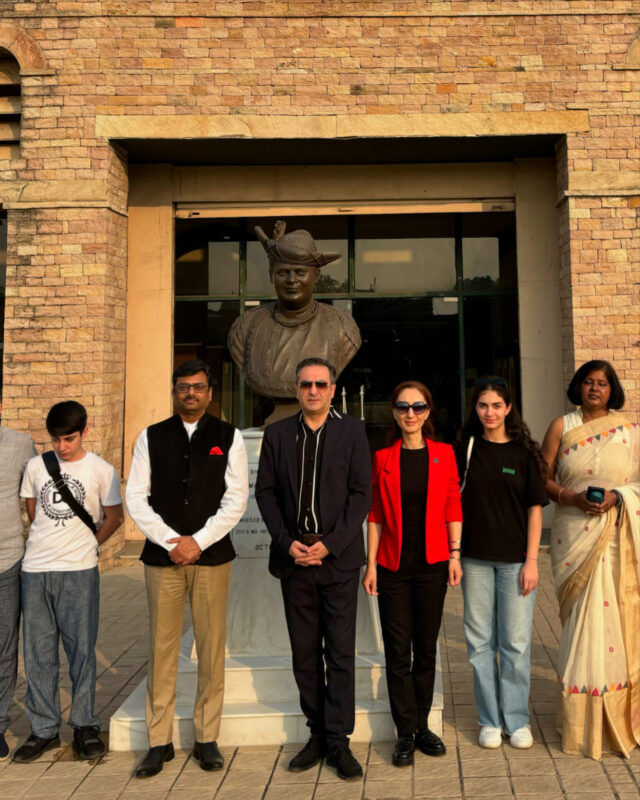There were 30 Armenian families in Gwalior, all of whom were in the military service of the Maharaja of Gwalior. Major Johanness left a fortune of 500,0000 rupees; another, Woskan, returned to his native Yerevan. After the battles of Maharajpore and Punniar in 1843, which resulted in the disbandment of the huge army of the Scindia, most of the Armenians quit Gwalior and gave up their martial occupations. Hakob’s palatial house at Naumahalla in Gwalior, where the Armenian Church was located, was bought by an erstwhile aristocratic Maratha family. Prior to her death, Helen, the widow of Hakob, sent to the Armenian Church at Calcutta and to the Cathedral at Julfa (Ispahan), all the sacred vessels and vestments of great intrinsic value, which had belonged to the Gwalior Armenian Church erected by Hakob.
Armenian Delegation at Scindia School. Photo Credit: Arunansh B. Goswami.
The Armenian delegation also visited cultural landmarks in Gwalior, including the Jai Vilas Palace of the Scindia Maharajas of Gwalior, who employed several Armenians. The Jai Vilas Palace was built in 1874 in Italian style by a Neapolitan army officer in the service of Jayajirao Scindia, the late Sir Michael Filose, whose ancestor worked along with Hakob Petrosyan. It is famous for its Durbar Hall, a chamber 100 feet long, 50 feet wide, and 40 feet high with several tons of gold used for decoration.
The delegation also visited one of the best boarding schools in India, the Scindia School (at the historic Gwalior Fort, from whose ramparts 95-minute guns, equal in number to the years of the veteran soldier Hakob Petrosyan, were fired when he passed away), established in 1897, where talks were held for possible student exchange programs between Kolkata’s 196-year-old Armenian School and the Scindia School.
After a sumptuous lunch at the historic school, the delegation visited the Man Singh Palace at the Gwalior fort. Raja Man Singh built this magnificent palace and the Gujri Mahal. The latter housed his famous queen, Mrignayani; it was here that famous Armenian artist Sarkis Kachadourian organized his exhibition of mural paintings. He was supported by Maharaja Jiwajirao M. Scindia of Gwalior in his artistic endeavor. Recently, an exhibition of his Ajanta paintings was organized at the UNESCO WHC event in New Delhi.
The delegation also visited the Armenian cemetery. In order to preserve this cemetery and convert it into an Indo-Armenian friendship park, the ambassador met the political representative of Gwalior (Member of Legislative Assembly) and Minister of Energy of Madhya Pradesh, Pradhumna Singh Tomar, who has assured the Armenian delegation of support from the government.
(Arunansh B. Goswami is a lawyer, historian and visiting fellow at the Orbeli Center in Armenia.)
